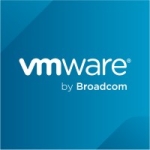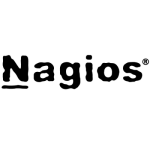What is our primary use case?
I used Cisco DNA Center for centralized management for the projects I worked on. My projects had different sites and fabric networks connected. A fabric module was created for every site, and Cisco DNA Center acts as a centralized manager, so you don't need to configure the switches. You need to integrate the device with Cisco DNA Center, and the configuration will be centralized.
What is most valuable?
What I found valuable in Cisco DNA Center is the Software-Defined Access Network, so the entire LAN network can be centralized and managed from a single dashboard.
Cisco DNA Center is suitable for centralized management and lets you deploy switches in a centralized fashion. You can also do multiple switch port configurations simultaneously and segregate your traffic into multiple fabrics.
Another valuable feature of Cisco DNA Center is enhanced security through Scalable Group Tags. Cisco DNA Center can be integrated with your Cisco ISE to enhance the port securities, and this paves the way for Software-Defined Networking in the LAN segment, which is the main advantage of Cisco DNA Center.
I also like that you can use Cisco DNA Center for data assurance or correlation. The solution shows your network and client health parameters, which I find convenient for troubleshooting.
What needs improvement?
An area for improvement in Cisco DNA Center is the latency in data correlation. For example, sometimes, when an issue happens, and I check the logs, I can't find the corresponding log. There's a delay in log replication, so this is what needs improvement in Cisco DNA Center.
Reporting in Cisco DNA Center could also be improved because it only has a few templates, and you can't customize it based on your requirements. There aren't many options available in Cisco DNA Center regarding reporting, versus Cisco Prime, which has excellent features for different levels of detailed reports.
I'd like to see real-time data replication in the next release of Cisco DNA Center, similar to what's done in Meraki. Data in Meraki is real-time with no delay, so data is immediately replicated in the cloud. Currently, there's a lag in Cisco DNA Center, and addressing that lag is the enhancement I'd like to see in Cisco DNA Center.
The solution also needs to be more user-friendly.
For how long have I used the solution?
I've been using Cisco DNA Center for the last three and a half years.
What do I think about the stability of the solution?
Cisco DNA Center isn't as stable, particularly with the logs, because it doesn't replicate the exact logs. Configuration-wise, the solution is stable, but it isn't stable for log reproduction.
What do I think about the scalability of the solution?
Scalability-wise, Cisco DNA Center is very good.
How are customer service and support?
We've contacted Cisco DNA Center support a lot of times because sometimes we get errors that we usually can't troubleshoot, so we'd need assistance from Cisco techs. For example, because Cisco DNA Center is a centralized dashboard manager, if we make any mistake that'll impact the whole location, it's better to always refer to technical support as they have the expertise whenever we're doing any scheduled activity or whenever we're facing issues with Cisco DNA Center, rather than doing trial and error.
On a scale of one to five, we'd rate the support a three because of the delayed issue resolution from the Cisco engineers. We have to put a lot of effort into following up with them. The engineers handling Cisco DNA Center support aren't very good, and they take a lot of time getting back to us with solutions to our issues. Issues should be solved within one to two days or a maximum of one week, but that's not happening. In the past, Cisco support used to follow up with us daily, and we could schedule a WebEx with them, and they'll start troubleshooting. Nowadays, that's not the case.
For example, we wanted to integrate the Microsoft Outreach server with Cisco DNA Center to capture logs from Cisco DNA Center to Microsoft Outreach, but it took them three months to make it happen. Every time we followed up, they'll say that the engineer wasn't available for the week, so that issue would be assigned to another engineer, and that engineer would ask for the logs, and we'll tell him that we'd already checked the logs, and he'll say that he wants fresh logs. We'll then troubleshoot, and the engineer will check the logs. After he's back from his vacation, the previous engineer will come back to us; then, we'll continue based on where we left off. Following up with Cisco DNA Center support was very hectic.
Which solution did I use previously and why did I switch?
Cisco DNA Center is the only product for Software-Defined Access in terms of LAN. You'll find a lot of competitors for SD-WAN, but for SDA technology, Cisco DNA Center is the only one currently, so this is the reason why my company is using the solution.
How was the initial setup?
The initial setup for Cisco DNA Center is a bit complex. Its set of configurations is a bit difficult. First, you need to install certificates for three cluster nodes. One cluster node has to be deployed first, followed by the second cluster node, after the completion of the services. For head node availability, you need to have three cluster nodes. All steps combined make setting up Cisco DNA Center a little complex.
The solution also requires a more complex configuration for the switch router, so you need a different design set to deploy and configure it. Compared to other Cisco solutions, the setup for Cisco DNA Center is complicated.
I didn't deploy Cisco DNA Center, but I've seen people deploying it. With a good, reliable internet connection, deployment takes around three to four hours. Configuring the three cluster nodes takes almost a day.
What's my experience with pricing, setup cost, and licensing?
Cisco DNA Center is a licensed product with multiple levels of licensing available such as basic, advanced, and essential. I don't have the exact figure, but Cisco DNA Center is costly. For example, the box has information about the essential license and costs a considerable amount of money. You need to pay extra to use advanced features in Cisco DNA Center.
My company sees Cisco DNA Center as a solution that's worth the money, which is why it invested in the solution. If you want centralized management for your network, especially when upgrading it, Cisco DNA Center is perfect, but it's more suitable for a large-scale rather than a small-scale network.
What other advice do I have?
I have hands-on experience with Cisco DNA Center.
I've worked on three projects using Cisco DNA Center, either a single standby or three-cluster node. Whenever there's a large-scale network, my company tries to go with Cisco DNA Center. As a whole, my company has between ten to fifteen projects utilizing Cisco DNA Center. Whoever wants a network upgrade would use Cisco DNA Center, but there'd be different setups for every region, such as APAC, EMEA, etc. Currently, my company has nine clusters or nine boxes. A single company can have multiple projects that use Cisco DNA Center. Because it's an evolving networking technology, people get accustomed to it and may want SD access, not just LAN.
My advice to others who may want to implement Cisco DNA Center is that before buying a product, you need to understand what it can do and how to handle it. A typical engineer working on a legacy network won't be able to work on Cisco DNA Center because it has a different protocol, technology, and configuration. It would be best if you learned how to handle Cisco DNA Center before going with it, so I suggest getting trained by Cisco first. Without the training, using Cisco DNA Center isn't going to be easy for you. You won't know how to integrate a switch with Cisco DNA Center unless you get the training. Through the training, you'll also learn the protocols. Before making the purchase, you need someone to explain Cisco DNA Center to you.
I would rate Cisco DNA Center as seven out of ten. It's a new technology with Software-Defined Access capability, which allows centralized LAN management, so I prefer Cisco DNA Center over other solutions. Cisco DNA Center still requires a lot of improvements, though, so I deducted three points out of ten.
I'm a customer of Cisco DNA Center.
Which deployment model are you using for this solution?
On-premises
Disclosure: My company does not have a business relationship with this vendor other than being a customer.




















